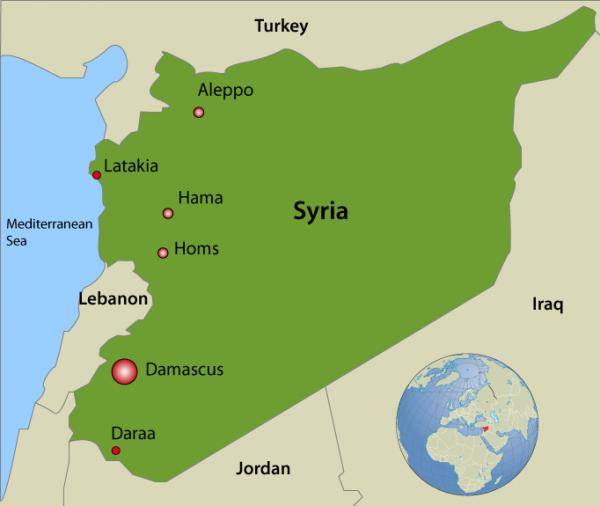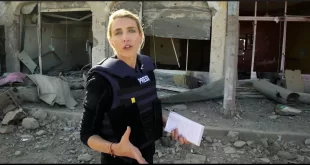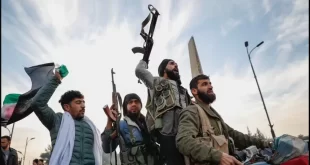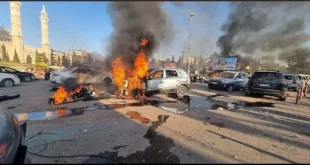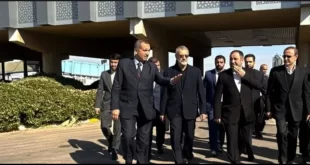Oct 9, 2013 [translation from Arabic]
Expectations arise about a raging battle might occur in Syria’s south between army units and armed groups, amid Western media reports referring to a Gulf and Western vigorous pursuit to make a breakthrough in the Syrian army field progress, ahead of any political resolution to the crisis.
West information suggests that Salman bin Sultan, brother of Saudi intelligence chief Bandar bin Sultan, supervises armed opposition groups training and financing. Sources in the Syrian opposition also confirm that Salman is leading the operations room in the Jordanian capital of Amman to guide the senior insurgent leaders jointly with Western and Jordanian intelligence agencies, in order to support militants’ attacks against the Syrian army positions in the south (Daraa province), and make progress toward the capital to compensate for the failures suffered by armed groups active there.
Daraa in Brief
Daraa, also called Horan Plain, stretches in the southern region covering an area of 3730 Km2 and housing around 916 thousand of population according to 2008 statistics. It occupies the first rank in producing state’s vegetables and almost fulfills the country’s needs of wheat.
The province includes a lot of major cities including Nawa, the second largest one after Daraa city, Jasem, Nemer, Enkhil, Kafr Shams, As-Sanamayn, Izraa, Sheikh Meskin, Al-Harak, Dae’l, Abtaa, Taibe, West Ghariya, Tafas, Khirbet Ghazaleh, Bakhet Monastery, Adas Monastery, East Ghariya, Sidon, Bosra al-Sham and others.
Why Daraa is Nominated?
Patrons of the armed groups in Syria set a series of goals throughout the crisis to topple the government militarily, and many of them predicted a resounding fall after Homs battles in 2012.
Yet, after the Syrian army foiled a scheme prepared by Bab Amr neighborhood, insurgents and foreign parties turned to Aleppo, the nation’s capital of economics. However, upon their failure, they resorted to the province of Damascus countryside where thousands of militants were mobilized to encircle the capital and seize control over it militarily.
Nevertheless, the rush of the Syrian army to launch ‘Shield of Damascus’ operation also foiled their scheme, following a series of quality achievements of military units in Eastern and Western Ghotas, including the control over gunmen strategic sites such as Otaibah, Adra, Shebaa, Tal Salman and others, which made the task of armed groups to enter the capital difficult.
Those difficulties forced domestic and foreign players to search for alternatives to achieve a breakthrough in a series of successes achieved by the Syrian army throughout the past months. Therefore, Daraa was nominated under the hope it may achieve the goal anticipated for insurgents and foreign parties supporting them.
Many Western and even Gulf newspapers revealed that military operations are being preparing to clench the capital starting from Daraa due to being:
1. Close to Damascus (Daraa is about 100 km away from the capital).
2. Adjacent to the Jordanian territories.
3. Adjacent to occupied Palestine.
4. Difficult to prevent militants and arms smuggling into the Syrian depth, given the vast borders.
5. Residence of armed groups in some locations on the border with Jordan, including the Old Customs.
6. Easy to provide logistical support for militants across the Jordan and the Zionist entity.
Those givens pushed the Western powers and some of the Gulf countries to intensify the training and arming of Syrian opposition groups across the camps set up for them in Jordan, according to several Western newspapers over the past months, such as the UK Times, the US Washington Post and the French Le Figaro.
Le Figaro published ‘information’ late August stating that Israeli, American and Jordanian officers leading a Syrian opposition battalion, have crossed the Jordanian border on August 17 and headed toward Damascus.
The article author, Isabelle Lasserre, said she drew her information from private military sources, though the Syrian group was composed of 300 men who present the vanguard of Syrian opposition force who have been trained in special forces camp supervised by the CIA.
Worth noting that the revealed information by Le Figaro and other Western newspapers, coincided with the announcement of the Syrian army for a series of ambushes targeting infiltration of militants, where dozens of insurgents have been killed, particularly in the area of Adra – Al-Damir, the insurgents gateway from Daraa to East Ghoua of rural Damascus.
Moreover, Western media reports talk about the vigorous U.S. – Saudi pursuit to increase support for opposition militants, as well as to intensify trainings in order to carry out attacks against the Syrian army positions in Daraa province, in which still retains a strong presence.
How do the U.S. and KSA support militants:
1. By feeding sectarian conflicts in the region
2. By smuggling foreign gunmen to support armed groups
3. By providing opposition with advanced weapons, including Konchris, Cornet and Arrow 8 rockets.
4. By training armed groups funded by Gulf states under the supervision of Westerners officers.
Another very important factor should not be ignored, which is the Israeli role in supporting insurgents, particularly in the southern region of Syria. The strategist Taleb Ibrahim confirmed that the center of gravity of those armed groups lies in the northern and western part of Daraa province, along the border with occupied Palestine.
“At that point, insurgents receive direct support from the Zionist enemy, where they evacuate their wounded and receive intelligence from Israeli reconnaissance planes and enemy observatories in Tal-Ali, al-Nada and Mount Hermon,” Ibrahim told Al-Manar website in an exclusive interview.
Battle for Daraa
All of the information and indicators intersect at one fact: Daraa may be on the verge of fierce battle between Syrian army units and armed groups.
“The most difficult real conflict and final battle in the Syrian crisis will be in the region of Daraa. Battles that may erupt there will absolutely be the most important and the most dangerous due to the strategic importance of the province,” Ibrahim added.
There is no doubt that the Syrian army has prepared itself for the confrontation that may occur in the south, not to mention the fierce battles it is engaged in on daily basis, as well as the strong military units presence in the area being close to the occupied Palestinian territories.
Taking reservations to talk about the military’s plans in Daraa, Ibrahim stressed that “military units certainly have contingency plans to deal with any confrontation levied in the south.”
No doubt that armed groups – with the foreign support – will not stop attempts in Daraa, but they will intensify efforts in the next period to achieve ‘the desired progress’, in order to compensate for the failures in rural Damascus and the Syrian north which witnesses fighting between the so-called Islamic State of Iraq and Levant (ISIL) and the rest of the armed opposition groups.
The coming days will be enough to clarify the image of what might happen.
Translation by Al-Manar Website
To read the Arabic version of this article, click here
 Syria Support Movement solidarity with the Syrian people
Syria Support Movement solidarity with the Syrian people

